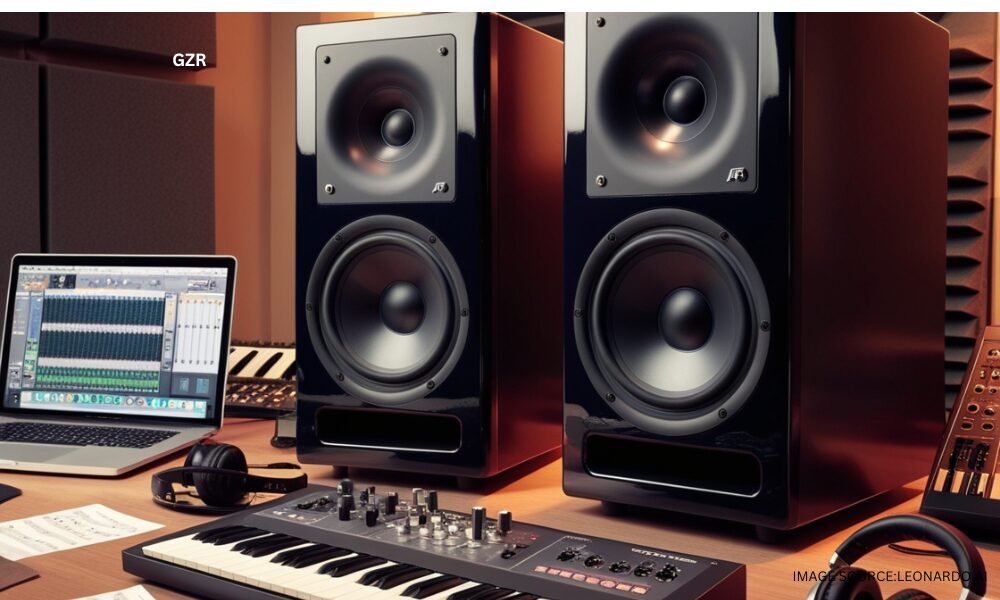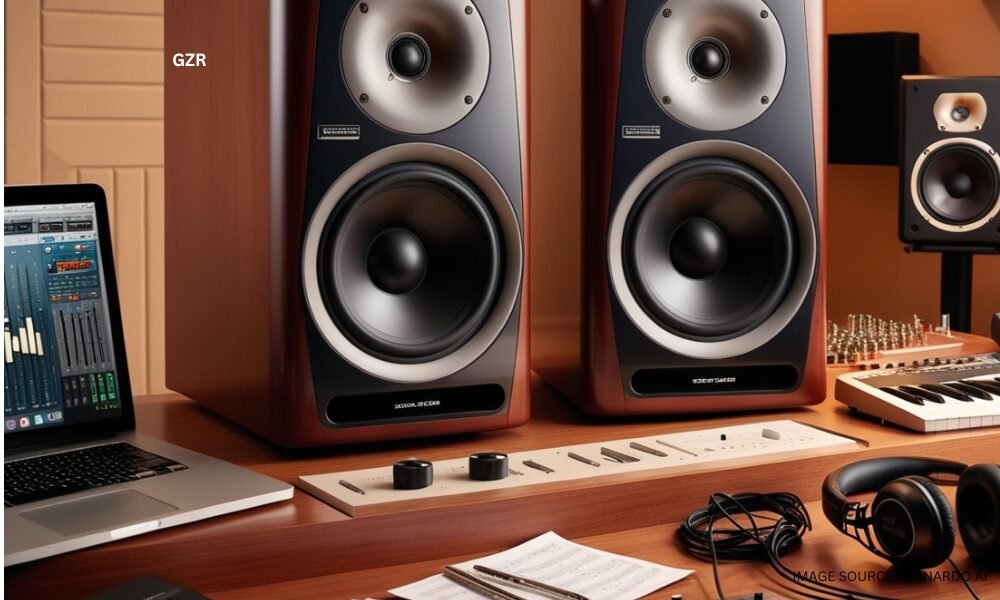Studio monitor speaker are distinct loudspeakers that are specifically designed for professional sound applications. In contrast to ordinary home speakers, studio monitors offer a near perfect frequency range response which would precisely reproduce sound without any addition or subtraction of the original sound.
This feature of studio monitors is why they are preferred for all the activities of the motion picture sound production industry including mixing, mastering and sound designing since it enables audio engineers and producers to experience their work in its pure form.
Table Of Contents
Importance Of Studio Monitor Speaker
- Accuracy: Unlike traditional speakers, studio monitors reproduce sound accurately giving the audio experts the confidence to work on their mixes.
- Consistency: They help ensure that the mixes work well on all listening devices, by establishing a good standard for an audio evaluation regardless of the playback system used.
- Detail: Good quality monitors help to identify some fine details contained in the recordings thereby aiding in better controlling dynamics, equalization, and effects.
Key Features To Consider
- Frequency Response: Monitors that support a wide band and flat frequency response are the kinds of monitors to look for. Presently, many of them come with a bandwidth of about 40 Hz to 20 kHz that covers all human hearing capabilities.
- Driver Size: Usually woofers sizes for most studio monitors commonly range in size from 5 to 8 inches and this woofers sizes affects bass response. This might produce deeper bassey response than smaller drivers but may not be suitable for all purposes.
- Passive Monitors: In this case, external amplifiers are necessary, which are on the other hand, adjustable but complicates the arrangement.
- Room Size Considerations: Find studio monitors that correspond to the dimensions of your studio. For example, too large monitors may be too much for amused vision in very small rooms, while too small ones will not be able to work well in projecting sound to very large rooms.
Types Of Studio Monitor Speaker
- Nearfield Monitors: They sit close to the listener (generally around 3 to 5 feet away) and are generally used in home and project studios. They reduce the effect of the room acoustics on the sound.
- Midfield Monitors: These are larger speakers which are meant to cover a bit more distance, 5-10ft. They provide better bass response and are often found in bigger studios.
- Farfield MonitorsThese are large professional studio monitors which are used in distances of greater than 10 feet or more in a wide range of mixing room application. Far field monitors create loud sounds designed for large mixing rooms.
- Subwoofers: These may not be referred to as monitors but the presence of sub woofers in the studio monitors enhances their low frequency response therefore making them ideal for some genres that use a lot of bass.

Recommendations For Studio Monitor Speaker
Mackie CR-X Series
- Offered Diameters: 3-inch, 5-inch, 8-inch
- Activities: Bluetooth and other input options
- Prices: Budget-friendly, perfect for starter setups
- Group of Customers: Most appropriate for users who are on a low budget and are in search of monitor speakers.
Yamaha HS Series
- Offered diameters: 5 inch, 7 inch .
- Activities: room control, high trim response controls
- Prices: Medium, known untouchable accuracy and reliability
- Group of Customers: Best suited for sound designers who need to monitor sound accurately and reliably.
Genelec 8010
- Offered Diameter: 3 inch
- Features: Small profile, reproduces sound of good quality, rugged materials
- Pricing: Expensive, aimed at special conditions
- Group of Customers: Appropriate for professional’s configurations due to preference of high sounded quality in small spaces.

NC8000 Series Loudspeakers
- Activities: Intermediate sound field display interface.
- Group of Customers: For everyone who wants performance for the price they pay.
Dan Binaural NC9000 Series
- Features: Loudspeakers that Mediators, Mega sound bombarding loudspeakers with stunning sound clarity and high wattage.
- Group of Customers: Users requiring high quality loudspeakers for use in special sound applications
Setting Up Studio Monitor Speaker
- Placement: Install the monitors at ear height and arrange them in an equilateral triangle with your listening position. This configuration helps to achieve a precise stereo image.
- Decoupling: Fit monitor stands or isolation pads to prevent surface transmission of vibrations and decoupling from the surface areas where they fixed. This helps in retaining clarity and precision.
- Space Treatment: Acoustic treatment of your studio space should be factored in. Use of soft materials, base traps and diffusers enhances sound by preventing reflections and standing waves.
- Positioning: In some models, there are settings that allow adjustment to fit the room. Additionally, use such options to adjust your speakers in accordance with the acoustics of the room.
Conclusion Of Studio Monitor Speaker
When choosing a studio monitor speaker, it is important to strike a balance between requirement and the features available. To begin with, the Mackie CR-X Series is simple and cheap with multi inputs and Bluetooth features ideal for beginner flexibly on a budget.
However the Yamaha HS Series has room control and sound accuracy, hence will be appreciated most by users who need exactness and dependability. Last but not the least, the compact Genelec 8010 loudspeaker utilizes its small very well in sound delivery making it best suited in controlled performance environments.
At the end of the day what best is selected will depend on how the reader uses their setup be it as a beginner or a professional or in a range in between. Knowing the features to expect, price ranges and the intended purpose will enable one to select the most suited monitor speaker for their studio.
FAQ’s
What speakers are used in studios?
Active studio monitors are mainly used in studios, with the amplifiers housed in them, which then will accurately reproduce the sound. Other popular brands include Yamaha, KRK, Adam Audio, and Genelec, which has a flat response frequency, really ideal for use by sound engineers to make critical decisions about mixing and mastering.
Are studio monitor speakers good for listening to music?
Yes, studio monitor speakers are excellent for listening to music, as they provide an accurate and uncolored sound. However, they may lack the enhanced bass and “flavor” that some consumer speakers offer. If you prefer a neutral listening experience, studio monitors can be a great choice.



